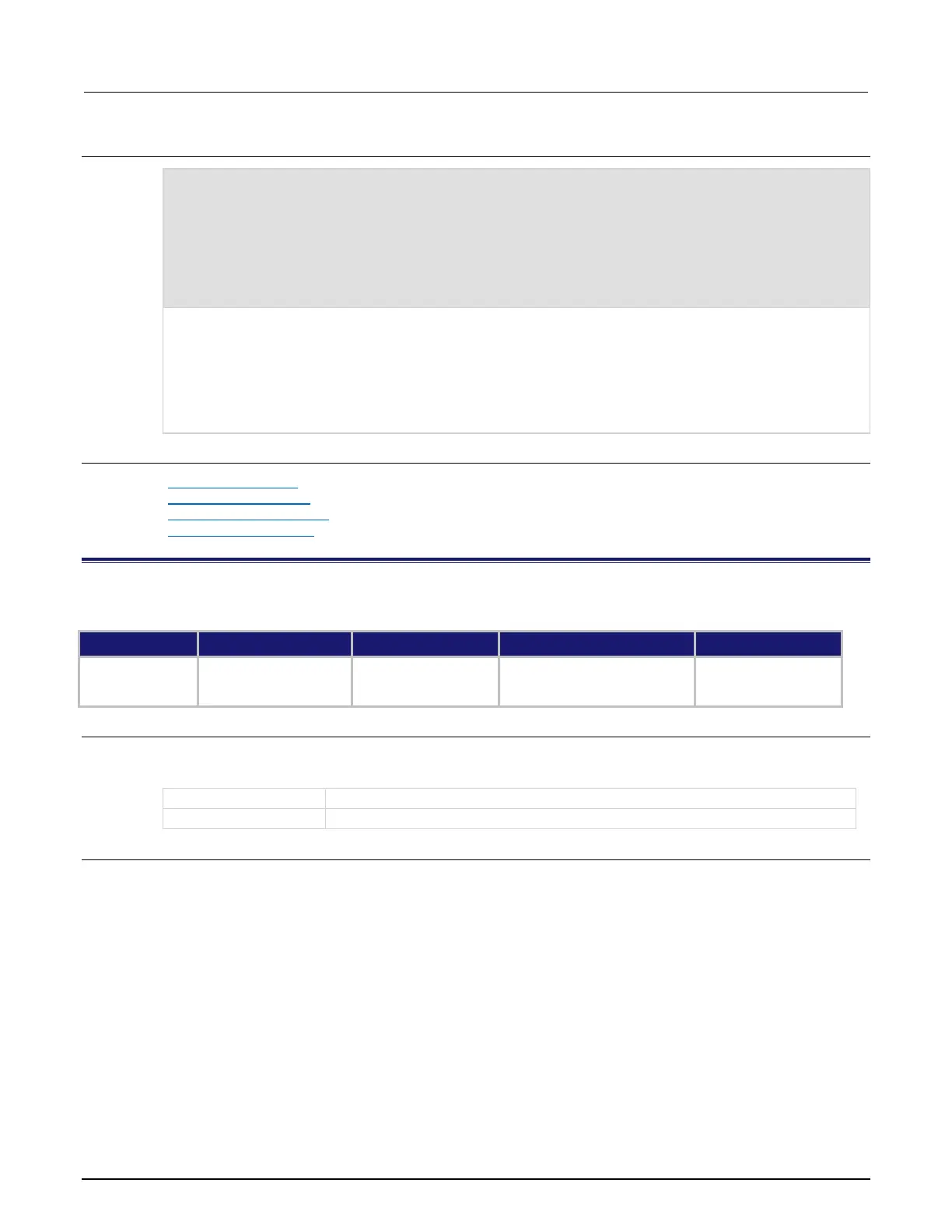Section 11: TSP command reference Series 3700A System Switch/Multimeter Reference Manual
11-122 3700AS-901-01 Rev. D/June 2018
digio.trigger[3].mode = 2
digio.trigger[3].pulsewidth = 50e-6
digio.trigger[3].stimulus = digio.trigger[5].EVENT_ID
print(digio.trigger[3].mode, digio.trigger[3].pulsewidth,
digio.trigger[3].stimulus)
digio.trigger[3].reset()
print(digio.trigger[3].mode, digio.trigger[3].pulsewidth,
digio.trigger[3].stimulus)
Set the digital I/O trigger line 3 for a falling edge with a pulsewidth of 50 µs.
Use digital I/O line 5 to trigger the event on line 3.
Reset the line back to factory default values.
Output before reset:
2.00000e+00 5.00000e-05 5.00000e+00
Output after reset:
0.00000e+00 1.00000e-05 0.00000e+00
Also see
digio.trigger[N].mode (on page 11-118)
digio.trigger[N].overrun (on page 11-119)
digio.trigger[N].pulsewidth (on page 11-120)
digio.trigger[N].stimulus (on page 11-122)
digio.trigger[N].stimulus
This attribute selects the event that causes a trigger to be asserted on the digital output line.
Instrument reset
Digital I/O trigger N reset
Save setup
Create configuration script
Save setup
Usage
triggerStimulus = digio.trigger[N].stimulus
digio.trigger[N].stimulus = triggerStimulus
The event identifier for the triggering event
Digital I/O trigger line (1 to 14)
Details
Set this attribute to zero (0) to disable the automatic trigger output.
Do not use the stimulus attribute for generating output triggers under script control. Use
digio.trigger[N].assert() instead.
The trigger stimulus for a digital I/O line may be set to one of the trigger event IDs, described in the
following table.

